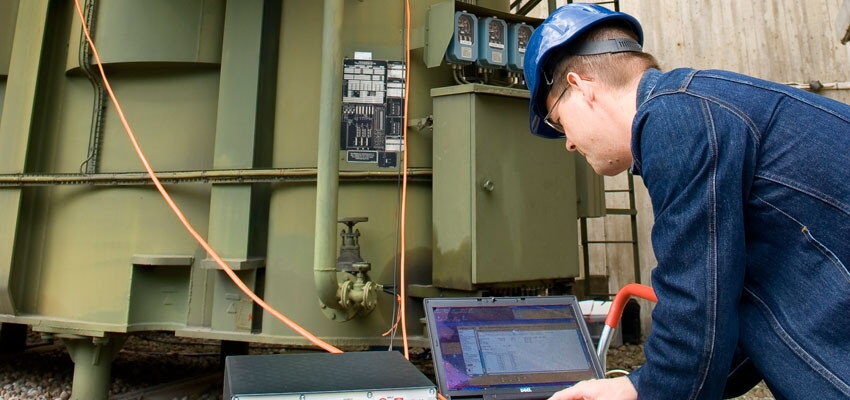
A smart way to minimize test time for transformer dielectric measurements
Abstract Dielectric response measurements for the moisture and oil conductivity assessment of transformers are well understood, internationally accepted and growing in use. Of the two...
byJill Duplessis, Matz Ohlen

Abstract
Dielectric response measurements for the moisture and oil conductivity assessment of transformers are well understood, internationally accepted and growing in use. Of the two principal dielectric response methods, an AC method called Dielectric Frequency Response (DFR, also Frequency-Domain Spectroscopy, FDS) is preferred due to its robustness against noise. The time requirement of a DFR measurement is lengthy compared to that of other electrical test methods. An earlier approach to accelerate test time combined DC (time domain) and AC (frequency domain) test methods. This article discusses the limitations inherent to that approach and presents today’s multi-frequency test solution that minimizes test time for DFR measurements without compromising accuracy.
Keywords: measurement time, Frequency-Domain Spectroscopy (FDS), Polarization-Depolarization Current (PDC), Dielectric Frequency Response (DFR), moisture in transformers
Introduction
The dangers of water in insulation systems are well known and fuel the need and desire to know the moisture content in power apparatus, such as transformers.
To this end, there are a variety of methods to estimate moisture contamination. Today there is greater general understanding of the advantages of (and a subsequent growing use of) dielectric response measurements, such as FDS and PDC, over the use of conventional methods, such as the application of equilibrium curves to the measured moisture content in an oil sample, to determine the moisture contamination of cellulosic insulation.
The primary challenge with dielectric response methods is to discriminate between the agents (moisture, temperature, oil conductivity, insulation construction, and conductive aging byproducts) that affect the response so that the resultant moisture estimation is reliable. A first step towards accomplishing this is to obtain the dielectric response of a system across a reasonable (large enough) frequency range, which is ideally defined differently and practically, depending on the asset and test conditions.
The measurement time to obtain such a response (and the subject of this article) can easily surprise when compared to other electrical field tests, and has influenced past approaches towards executing Dielectric Frequency Response (DFR) measurements. While one noted approach, which combines AC and DC test methods, achieves its objective of reducing test length, it is not a universal solution. A primary limitation is the combined method’s sensitivity to electromagnetic interference that is present in varying degrees in most substations. While the combined approach had yielded an improvement over the time requirements of a traditional FDS measurement, now, by using a multi-frequency technique for measuring the lowest frequencies, the preferred FDS method is a better choice.







